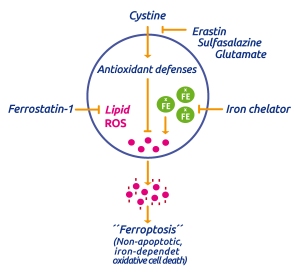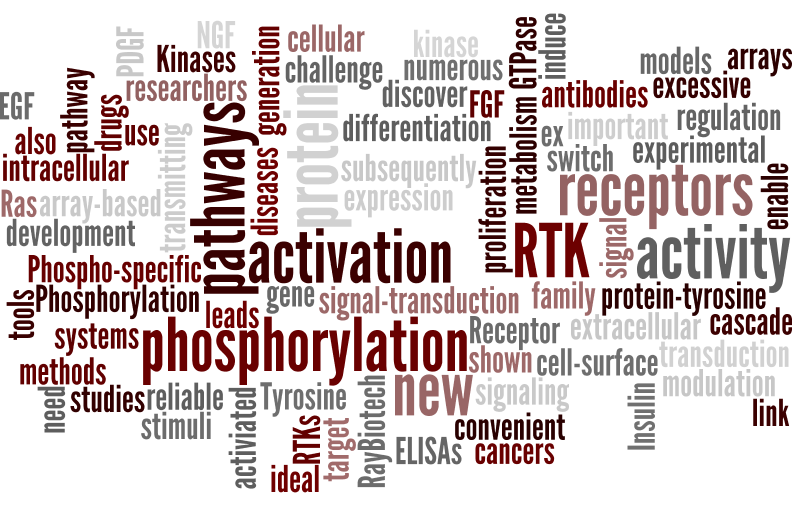A lot of compounds are known and available to modulate (inhibit or activate) the most prominent mode of programmed cell death – Apoptosis. In a recent post, I summarized methods to detect early Apoptosis and at the end of this post you’ll find a list of apoptosis modulators (available through tebu-bio). But there are other modes of programmed cell death, such as Autophagy (see How to manipulate and measure Autophagy), Necroptosis, and Ferroptosis.
Today I would like to focus on Ferroptosis, and invite you to take a look at the first Ferroptosis inhibitor on the market.
Ferroptosis – a relatively unknown mode of programed cell death
First, a quick overview about the process of Ferroptosis.
First indications for a new mode of cell death were already found in 2003 when 2 small molecules (erastin and RSL3) were shown to selectively kill oncogenic RAS mutant cell lines (1, 2).

The small GTPase RAS is known to be mutated in appprox. 30% of all tumors, thus representing an important target for anti cancer drug development. The respective RAS mutant specific compounds have been referred to as RAS-selective lethal compounds (RSL). At the beginning the type of cell death which is induced by RSLs remained puzzling. However, it could be shown that this type of cell death is linked to an increase of ROS (reactive oxygen species) in cells and can naturally be prevented by either iron chelation or genetic inhibition of iron uptake (2, 3).
Finally a mechanism called Ferroptosis has been described (4). The process is triggered by an iron-dependent accumulation of lethal ROS. It can be induced by e.g. erastin (see Fig 1), which blocks the cellular uptake of cystine (formed by the oxidation of two cysteine molecules and covalently linked via a disulfide bond) and thus blocking the intracellular antioxidant defense mechanism by limiting the production of intracellular glutathione (GSH), the primary cellular antioxid.
ROS generation is iron-dependent as its accumulation and cell death can be supressed by the iron chelator deferoxamine (4). More recent findings (5) show that the sensitivity of ROS-induced ferroptosis is significantly increased in p53-activated cells, results which might lead to a novel mechanism of tumor suppression.
Ferrostatin-1 – the first inhibitor of erastin-induced ferroptosis

Some additional interesting reagents:
- Exploring RAS activation in your cells? Take a look at the benefits of the RAS G-LISA assay.
- Measuring the anti-oxidative potential of your cells? You might like the ORAC and ABTS antioxidant assay kits



